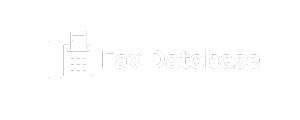In an increasingly mobile-first world, businesses that know how to collect and apply mobile data have a clear advantage in building a high-quality lead pipeline. Mobile data provides real-time insights into user behavior, preferences, and intent — all essential for identifying, nurturing, and converting leads. From app usage and geolocation to mobile web browsing patterns, every touchpoint offers information that can drive smarter marketing decisions. When used strategically, mobile data doesn’t just help attract more leads — it helps attract the right ones.
Key Sources of Mobile Data for Lead Generation
There are several reliable sources to gather mobile data. Mobile websites can track user behavior like page views, session duration, and click paths. Mobile apps provide even richer data, including in-app actions, feature usage, and shop patterns. Other valuable sources include SMS engagement, push notification interactions, and even mobile ad responses. Geo-based data from devices can help identify nearby prospects, while QR code scans provide insight into offline-to-online behavior. The most effective lead pipelines pull from multiple mobile data streams to build a complete picture of potential customers.
Best Practices for Collecting Mobile Data Responsibly
With mobile data collection, privacy and consent are critical. Always inform users of what data you’re collecting and why. Use opt-ins for push notifications, SMS, or timing the call for maximum impact tracking. Be transparent with cookie policies and allow easy opt-outs. Make sure your systems comply with data privacy laws like GDPR and CCPA. On the technical side, use tools like Google Analytics 4, Firebase, or Mixpanel to track mobile interactions accurately. When done right, responsible data collection builds trust — and trusted users are more likely to become paying customers.
Putting Mobile Data to Work in Your Lead Funnel
Once collected, mobile data should flow directly into your CRM or marketing automation platform. This allows you to segment leads based on behavior — for example, users who visited your pricing clean email twice from mobile can be prioritized for follow-up. You can also trigger personalized SMS, emails, or push notifications based on specific mobile actions. Use behavioral scoring models to identify high-intent leads and automate nurturing workflows that respond in real time. The ultimate goal is to convert mobile data into meaningful interactions — and those interactions into loyal, long-term customers.
